A nutraceutical supplement is a substance produced in a purified or extracted form, administered orally to the patient with the intent of improving the health and wellbeing (Osella et al, 2008). They require a marketing authorisation if medicinal claims are made or if they contain certain ingredients that exert a pharmacological effect on the target animal (Veterinary Medicines Directorate, 2013). The use of nutraceuticals in animals is growing and while it is assumed that they can aid in clinical treatment, studies that have investigated the efficacy of nutracetuticals on various conditions including osteoarthritis (Vandeweerd et al, 2012), canine liver disease (Vandeweerd et al, 2013) immunity (Zaine et al, 2014) and cognitive dysfunction (Araujo et al, 2008) have found varying results.
Palatability is referred to as the voluntary acceptance and consumption of a pharmaceutical composition which can be measured by acceptance, preference and consumption tests (Gossellin et al, 2010). When a substance has a 90% or higher voluntary acceptance rate in the target species, the product is deemed to be palatable (Gossellin et al, 2010). Smell, taste and texture are three main components affecting the palatability of a product, but physical characteristics such as the shape and size of the product should also be considered when designing products (Thombre, 2004; Bourgeois et al, 2006).
The ease of administration and the palatability of the product are important factors that influence patient and owner compliance, both essential components of veterinary medicine, therefore palatability testing of products is required (Thombre, 2004).
Past research in palatability
Palatability tests were originally used in the pet industry to test the palatability of pet food and treats (Payne-Johnson et al, 2006). Palatability has now been used to examine a range of medications in dogs including firocoxib (Payne-Johnson et al, 2006); Rimadyl® (Zoetis), Metacam® (Boehringer Ingelheim Limited) (Payne-Johnson et al, (2007); anthelmintic solutions (Courbet et al, 2008); benazepril (Zemirline et al, 2009) and carprofen, (Gossellin et al, 2010). However, palatability studies in cats have been limited (Hullar et al, 2001; Cron et al, 2014). It is important to develop palatability studies that focus on cats as they are known to be highly selective with food, and are more likely to refuse food or go off their food for unknown reasons (Thombre, 2004). Cats' taste preferences are influenced by the foods introduced from weaning until 6 months of age (Zoran and Buffington, 2011; Hamper et al, 2012) and are also extremely sensitive to minute changes in the composition of foods offered, making the administration of drugs when offered on/in food difficult (Bradshaw et al, 1996). Cats can also show signs of neophobia, a condition signified by avoidance of a food/product that is not familiar to them. Consequently, this can affect the acceptance when first offering a product (Bradshaw et al, 1996).
Conversely, neophilia can be described as the novelty effect; it is the preference for a new food or product. Neophilia is observed quite often in carnivores; the preference for the novel product is often short lived usually only lasting a few days (Bourgeois et al, 2006); a flaw found in the majority of literature reviewed for the study presented here was the limited duration of preference testing in current research potentially leading to inaccurate data due to neophilia.
Determining palatability
Measuring palatability in animals can be difficult because of the subjective nature of the animal's response (Araujo and Milgram, 2004; Thrombre, 2004). Although, there are no standard accepted methods for testing the palatability of pharmaceutical products in companion animals there are two main palatability tests that are often used: these are the acceptance test and the preference test (Thrombre, 2004; Verbrugghe et al, 2012).
Acceptance and preference tests
Acceptance tests focus on whether the animal will eat the product that is offered voluntarily; it tests consumption and is a direct measure of compliance (Thombre, 2004). Acceptance tests involve offering only the product to the animal and observing whether they take the product or not (Thombre, 2004) (Figure 1–7).
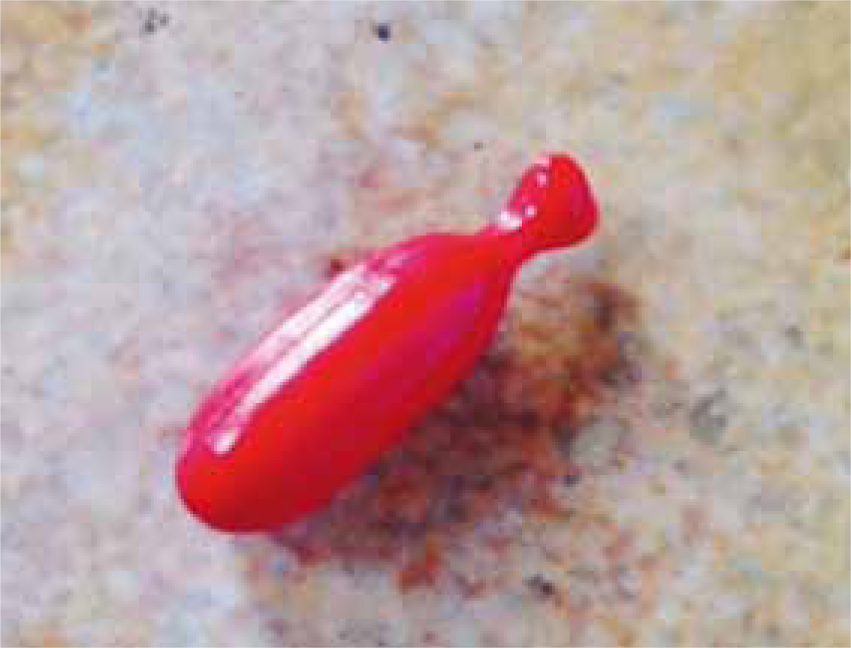
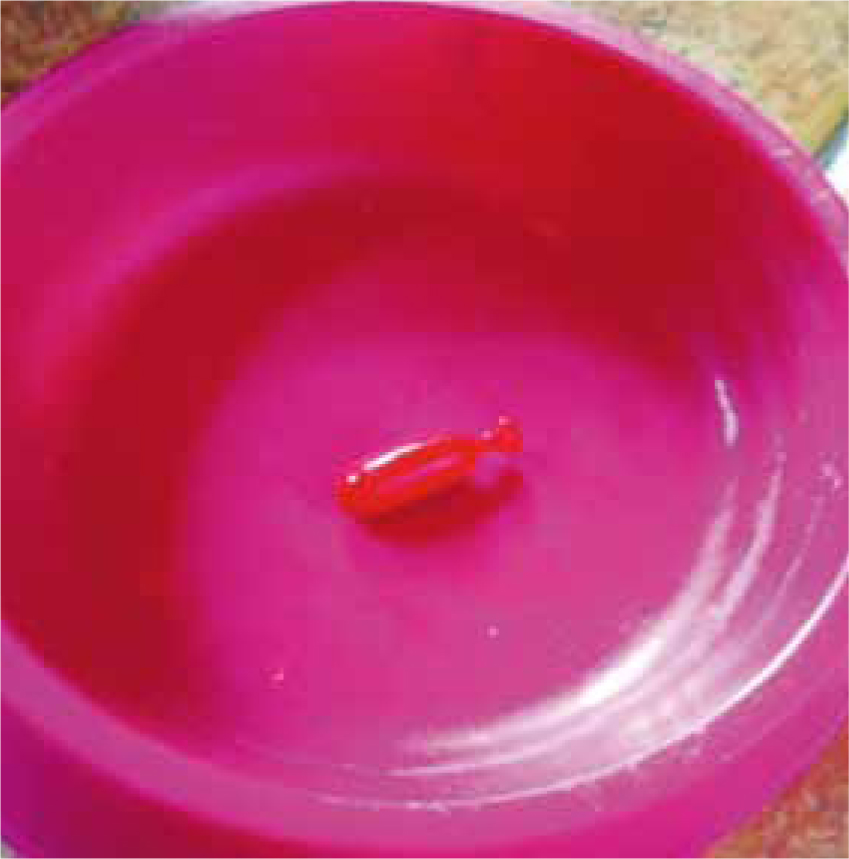
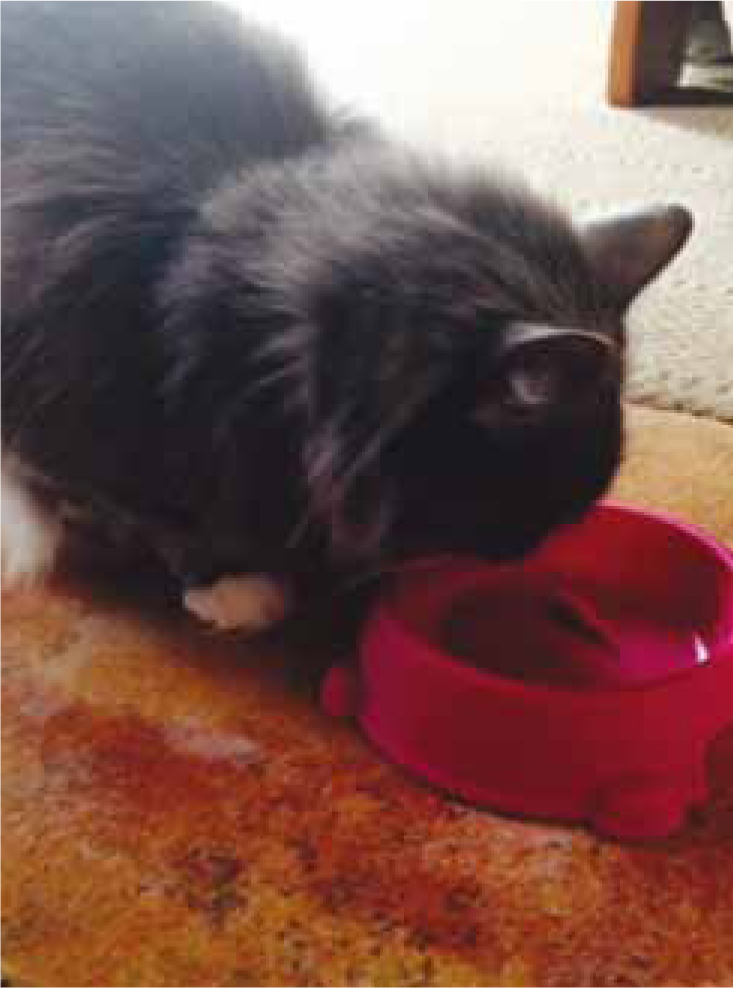
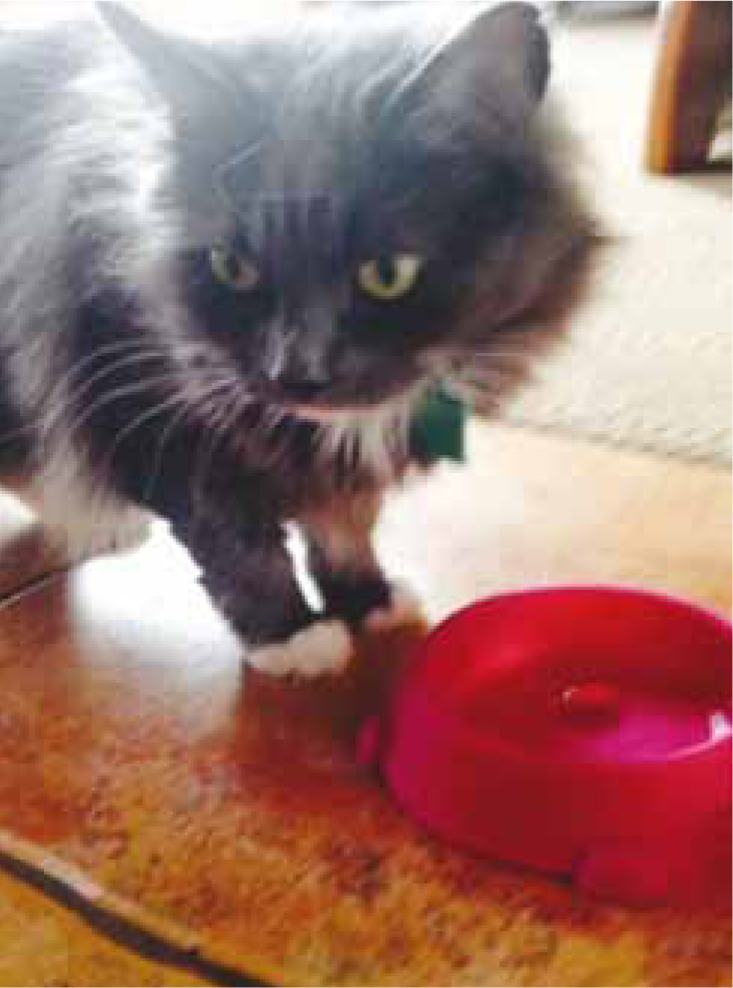
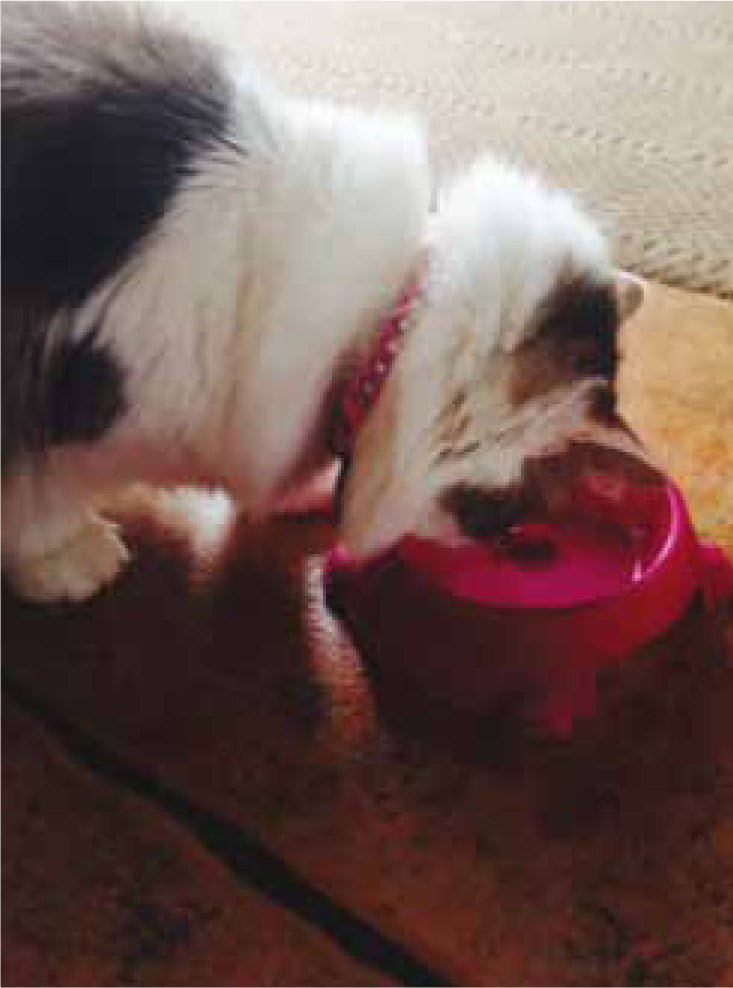

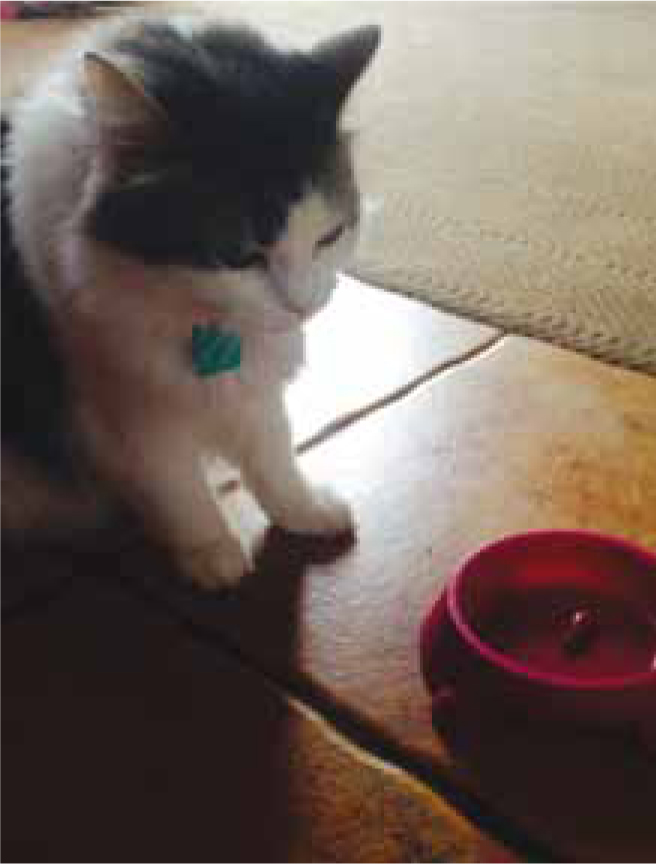
Preference tests investigate if the animal prefers one option to another; it is a more sensitive test allowing the animal to exercise choice (Thombre, 2004). Preference tests involve offering the animal two formulations: the test formulation and a control formulation and observing which one the animal ingests (Thombre, 2004) (Figures 8–10).
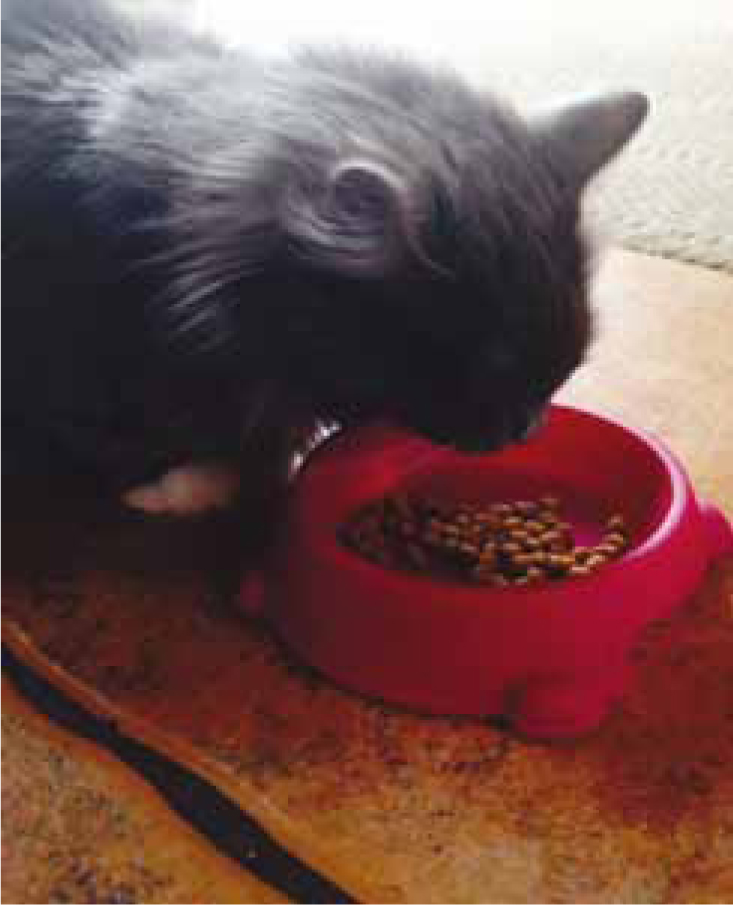
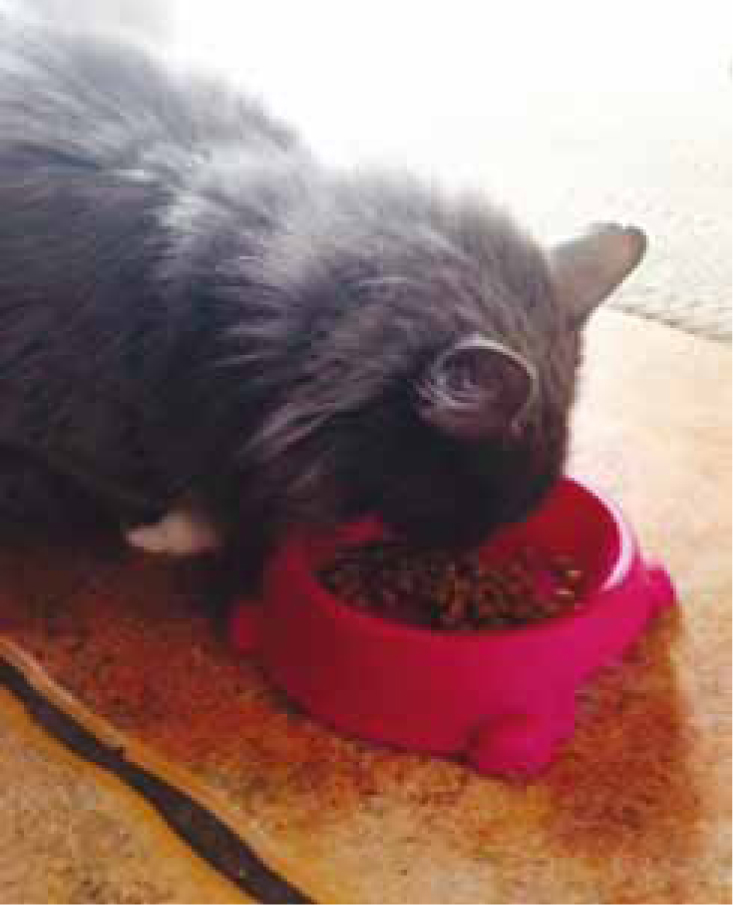
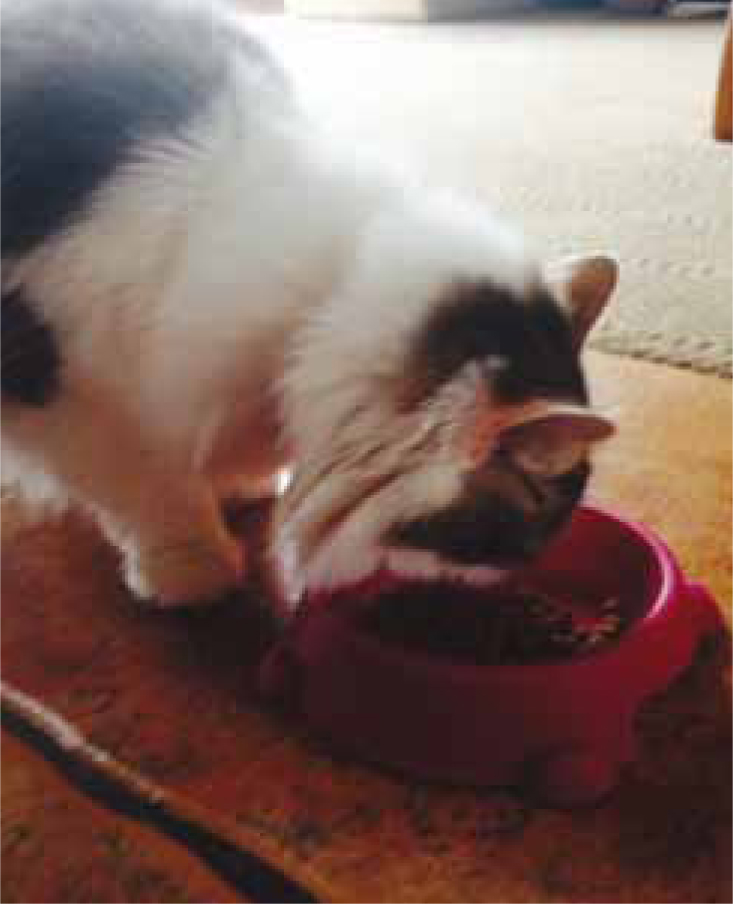
Methodologies
The methodologies used in the current study were adapted from the protocols used by Payne-Johnson et al (2006); Zemirline et al (2009); and Gossellin et al (2010). Payne-Johnson et al (2006) compared three commercial formulations of carprofen and one commercial formulation of firocoxib in a sample of 44 dogs using preference and acceptance tests over 3 study days. In each test the individual dog was offered one tablet of each of the two products simultaneously to measure choice and voluntary consumption (Payne-Johnson et al, 2006). Zemirline et al (2009) used preference and acceptance tests to compare the palatability of a new formulation with two commercial formulations of benazepril in 20 dogs. Each dog was simultaneously offered a pair of products on three different occasions from either the bowl or the ground. Gossellin et al (2010) studied the palatability of two commercial tablet formulations of carprofen, conducting preference tests with the two products using various breeds of dog. They stated that a product is considered palatable if it is voluntarily accepted in 90% of cases.
Products tested
Two nutraceutical products were investigated in the current study. The first product (a capsule containing a liquid) and a second product (a capsule containing a powder) were investigated using acceptance and preference tests. Both products were administered in line with the manufacturer's guidelines. The manufacturers state that the products can either be given whole or the capsule broken and just the contents administered so both the whole products and contents of the capsules were tested.
Cats: study site and animals
The research was conducted on stray cats from a local charity. Thirty participants were selected to be used based on numbers utilised in other palatability studies (Payne-Johnson et al, 2007; Courbet et al, 2008; and Zemirline et al, 2009). The number was calculated to include the possibility of cats being rehomed during the trial period. All results and subject details were recorded including: age, gender, breed, weight, usual diet and any health problems to see if these factors had any influence on the palatability to that cat specifically. Cats of all ages excluding kittens (6 months–14 years) were included in the study but were classified as junior, prime, mature and senior according to Feline Advisory Bureau Guidelines (Feline Advisory Bureau, 2013). All animals were health checked prior to inclusion in the study, data from participants re-homed during the research period were removed from the study.
Dogs: study site and animals
The research was conducted in a rescue and rehoming centre for unwanted dogs. The use of shelter dogs in an investigation regarding palatability allowed the process to use a range of random dogs. Having all of the subjects in one place allowed the procedure to be standardised as all of the dogs received the product from the same person at the same time every day. The sample size was based on numbers used in similar studies (Payne-Johnson et al, 2006 and 2007; Zemirlineet al, 2009) 30 dogs from the kennels were selected by convenience sampling to participate in the study. The dogs selected consisted of a range of breeds, gender, age and length of stay in the rescue centre. The breeds used included Akita, American Bulldog, Beagle, Border Collie, Doberman, Jack Russell, Labrador Retriever, German Sheppard, Schnauzer, Spaniel and Staffordshire Bull Terrier. Seventeen females and 13 males were used, age ranged from 1 to 13 years and the length of stay in the centre varied from 9 to 442 days. All animals were health checked prior to inclusion within the study, data from participants re-homed during the research period were removed from the study.
Duration of study
The study was conducted over a 12 day period while other studies that had investigated palatability had used a shorter time period (between 2 and 9 days) (Courbet et al, 2008; Payne-Johnson et al, 2007 and 2008 Zemirline et al, 2009). In order to meet the objectives of this study a longer time period was required. It was decided that 12 days was necessary as the study examined multiple aspects, whereas the other studies were only examining one or two aspects.
Cats: the acceptance test for capsule contents
The same protocols for product 1 (liquid) and product 2 (powder) were used. To prevent bias each test was conducted over 3 different days at the same time of day (9 am before breakfast) (Gossellin et al, 2010). Each cat was offered the product contents (liquid or powder) in a standardised 12.5 cm ceramic cat bowl that was already used by the shelter. Zemirline et al (2009) found that some animals may show a side preference when the bowls are placed. It was therefore decided to alternate the bowls so that each bowl was offered from a different hand each day to stop any bias that the cats may have towards the placement of the bowl.
The time limit used in the study was based on previous palatability tests using dogs. Payne-Johnson et al (2007) gave their participants a time limit of 60 seconds and a study conducted by Zemirline et al (2009) gave a time limit of 2 minutes. Cats are likely to take longer to consume an offered product than dogs as they are more difficult to administer products to and therefore cats were given an additional 3 minutes (Bradshaw et al, 1996). Therefore, each cat was observed for 5 minutes.
Dogs: the acceptance test for capsule contents
The same protocol used for cats was used for dogs apart from the time limit and the amount of food used. The duration used was 2 minutes and the amount of food used was 25 g of wet food and 18 g of dry food which was adapted from previous studies conducted by Payne-Johnson (2006; 2007).
The preference tests
The same protocols were used for cats and dogs. Six preference tests were conducted on cats and eight were conducted on dogs. For palatability testing, the control and stability of environmental factors and the accuracy of methodology are essential elements to achieving reliable palatability results. The test was standardised by using the same bowl type, food quantity and type (same food as provided by the shelter) so only the product or the product type was altered. The order that the bowls were presented in was rotated to prevent habituation (Payne-Johnson, 2007). The bowls were offered on a tray at the same time to prevent bias. The timer was started once the bowls were placed in the kennel and the time taken to begin consuming the product and the time taken to consume the contents were both recorded. All tests were stopped after the 5 minutes for cats and 2 minutes for dogs regardless of amount of product consumed. Each animal was scored at the end of the test using a scale adapted from Payne-Johnson et al's (2006; 2007) studies (Table 1).
Table 1. Voluntary acceptance and consumption of the product
| Score | Level of acceptance and consumption of the product |
|---|---|
| 0 | None taken/no interest |
| 1 | Interest including sniffing |
| 2 | Partially eating |
| 3 | Fully eating |
The methodology was adapted for tests five and six (Table 2) to prevent consumption of both products during each test period. This meant that once the animal had licked one bowl, the others were removed to prevent the animal consuming two products. Although it is noted that this intervention may have affected the results, welfare of the participant was paramount therefore it was deemed necessary to remove the other bowls.
Table 2. Type of preference tests conducted
| Preference test | Details |
|---|---|
| 1 | Wet food with product contents 1 (liquid) versus wet food with no product |
| 2 | Wet food with product contents 2 (powder) versus wet food with no product |
| 3 | Dry food with product content 1 (liquid) versus dry food with no product |
| 4 | Dry food with product content 2 (powder) versus dry food with no product |
| 5 | Wet food with product 1 content (liquid), wet food with product 2 (powder) and wet food with no product |
| 6 | Dry food with product 1 content (liquid), dry food with product 2 (powder) and dry food with no product |
| 7 | Whole capsule versus capsule contents (liquid) in wet food |
| 8 | Whole capsule versus capsule contents (powder) in dry food |
This also required adaptation of the scale to include licking, therefore standardising and clarifying when the bowls should be removed. The products were scored (Table 3) and each animal was given a total score at the end of the 9 days for each product in order to determine preference.
Table 3. Voluntary acceptance and consumption of two products
| Score | Level of acceptance and consumption |
|---|---|
| 0 | No interest |
| 1 | Sniffing |
| 2 | Licking the food |
| 3 | Partially consuming the food |
| 4 | Fully consuming the food |
Methodology improvements for future studies
During the study, both dogs and cats could hear and see other dogs/cats which may have affected their eating habits (Stephen and Ledger, 2005) as competitive feeding and scavenging are two key elements that will increase an animal's consumption rate (Bradshaw, 2006). Alternatively, the noise and sight of other dogs or cats and humans may distract the animal being tested resulting in them not showing any interest or a preference in the food offered. Conducting the tests with each individual animal in a quiet, controlled environment may have produced more reliable results.
The dogs and cats that participated in the study were routinely fed dry food with limited access to wet food. Therefore, when the palatability test involving wet food was conducted nearly all of the participants were motivated to eat the wet food as it was highly palatable (Delaney, 2006). Dogs showed an increased motivation compared with cats. This therefore could have impacted on the results as participants were showing a preference towards the food type rather than the product. Offering the participant's wet food 1 to 2 weeks before the investigation started would habituate them. Subsequently, the results regarding the palatability of the products may be more reliable.
In previous studies that carried out the preference test (Payne-Johnson et al, 2006 and 2007; Zemirline et al, 2009; Gossellin et al, 2010), each product was specifically allocated to a bowl location: one product to the left bowl and one to the right bowl following a randomised allocation plan. However, this was not maintained in the current study which may have resulted in subjective preferences. In future palatability studies this aspect should be enforced to prevent routine bias.
Each product or product form was tested for 3 days which was consistent with previous studies (Payne-Johnson et al, 2006; 2007). However, short-term palatability tests can produce misleading results due to neophilia (Bourgeois et al, 2006) as products for a chronic condition often need to be administered for a long period of time (Landsberg, 2010), further research that investigates long-term palatability of products would be beneficial.
Healthy animals were used in the current study, therefore the palatability of the products in dogs and cats with the condition the product is targeted for was not considered. To develop the assessment of a product's palatability, a study with the animals that have the specific condition would be extremely valuable. This is an important factor to take into account as those animals will be routinely receiving the product, therefore it is essential that they like the taste of it and accept it. Likewise, the treatment is given by owners and the administration and acceptance of a product can be affected by the environment and owner–pet interaction (Gossellin et al, 2010). Future palatability studies that involved animals in their home environment would be beneficial to gauge the importance of environment on palatability.
Conclusion
The palatability of a product has a substantial impact on medical needs such as convenience and compliance, especially for chronically administered formulations. Therefore, the development of palatable pharmaceutical products will enable easier administration and owner compliance which is vital for successful treatment. While studies examining palatability of food and acceptance of various medications have been conducted there is less research focussing on palatability of nutraceuticals especially in cats. The nutraceutical industry has rapidly expanded in recent years. These nutraceuticals present an opportunity for the owner to prevent and manage common health problems, offering consumer-focused solutions to issues that are currently addressed only by pharmaceutical interventions or not at all. Therefore, not only is research needed to evaluate their effectiveness to help prevent or cure disease, but there is also a need for palatability studies as they rely so strongly on owner and animal compliance.
Key Points
- Conducting acceptance and palatability tests on all oral medications is essential to increase owner compliance.
- Neophilia and neophobia need to be considered when preparing protocols for all acceptance and preference tests to control validity of results.
- Standardisation and clear guidelines of acceptance scoring is essential to support animal welfare and prevent researcher bias.
- Adaptation and consideration needs to be given towards presentation of food to animals to prevent ‘perceived’ competition affecting consumption.
- Experimenters should introduce the chosen test food, if this is new to the participant, prior to the initiation of the study. This will habituate the participants to the food and control any potential bias resulting from a change in diet rather than the product.
- Future research should look at long-term palatability of products.


